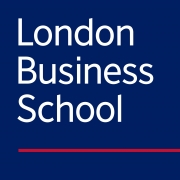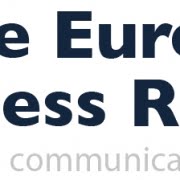Millennials don’t expect to work anywhere for more than five years
It is a truth universally acknowledged that an ambitious graduate in possession of a good brain must be in want of a new job.
That is the reality for employers and Generation Y employees (roughly those born between the early 1980s and the early 2000s). No sooner does the young, intrepid tyro grace the halls of industry than he or she expects to be promoted within hours, to work from home and to challenge their managers’ assumptions and values, despite their decades of experience.
While this may sound melodramatic, it is not that far off many conversations we have had with HR directors from industries around the world.
With the employer benefits package taking third place to work/life balance and organisational culture, baby boomers and the formerly misunderstood Generation X (roughly those born between the early 1960s and the early 1980s), fail utterly to offer benefits that appeal to the high-potential Y. So what do they want?
In a few weeks’ time at London Business School’s annual Global Leadership Summit, we will reveal the results of a five-year survey of Gen Y participants on our Emerging Leaders Programme. Representing 33 countries, these high-potentials have already been identified by their companies as their most desirable young employees. We asked what they value in an employer, how long they wish to stay with one, and how they will lead when they eventually reach the C-suite.
The vast majority (90%) said that they did not plan to stay with any given employer for more than five years. More than a third (37%) answered that they plan to stay no more than two years. Almost 40% start a new role already planning their next career move in the immediate future. How is the employer to retain talent?
One response is to completely revise the employer value proposition in favour of a quicker return to the employee. This might include assigning a senior mentor to offer executive perspective unusually early, assigning Gen Ys to quick win 12- to 18-month team projects and an acknowledgement that while we may not work together for many years in one go, we may reunite when the Gen Y is a seasoned manager, reaping the benefits of growth without all the costs of nurturing it.
Almost certainly it requires an understanding of the environment that these emerging leaders aspire to. Our study shows that only 12% of emerging leaders aspire to emulate CEOs who focus on how the business is trading.
Developing and promoting innovation is a top priority for emerging leaders, 34% of whom wish to emulate CEOs who take the entrepreneurial approach to company management: “How’s my baby doing today?” An even higher percentage (39%) say they most identify with CEOs whose aim is to make the company and the world, a better place.
Leaders with ultimate accountability though, have to endure relentless dissatisfaction from shareholders, employers or customers – and frequently all three. Always in the limelight, making and justifying often public and sometimes unpopular decisions, these leaders occupy a twilight zone of professional and personal trade-offs, leaving little time for the flexing of creative muscles and a more entrepreneurial approach.
With a later retirement age and longer working life, portfolio careers encompassing roles with ultimate accountability and roles demanding different leadership skills, those of the counsellor, coach or deputy, could be Gen Y’s best chance of securing the variety of experience and work/life balance that is so important to them.
Adam Kingl is director of Learning Solutions, London Business School. Richard Hytner is adjunct associate professor of marketing, London Business School and author of Consiglieri: Leading From The Shadows.
Join the community of sustainability professionals and experts. Become a GSB member to get more stories like this direct to your inbox
Since you’re here…
… we have a small favour to ask. More people are reading and supporting The Guardian’s independent, investigative journalism than ever before. And unlike many news organisations, we have chosen an approach that allows us to keep our journalism accessible to all, regardless of where they live or what they can afford. But we need your ongoing support to keep working as we do.
The Guardian will engage with the most critical issues of our time – from the escalating climate catastrophe to widespread inequality to the influence of big tech on our lives. At a time when factual information is a necessity, we believe that each of us, around the world, deserves access to accurate reporting with integrity at its heart.
Our editorial independence means we set our own agenda and voice our own opinions. Guardian journalism is free from commercial and political bias and not influenced by billionaire owners or shareholders. This means we can give a voice to those less heard, explore where others turn away, and rigorously challenge those in power.
We need your support to keep delivering quality journalism, to maintain our openness and to protect our precious independence. Every reader contribution, big or small, is so valuable. Support The Guardian from as little as $1 – and it only takes a minute. Thank you.







